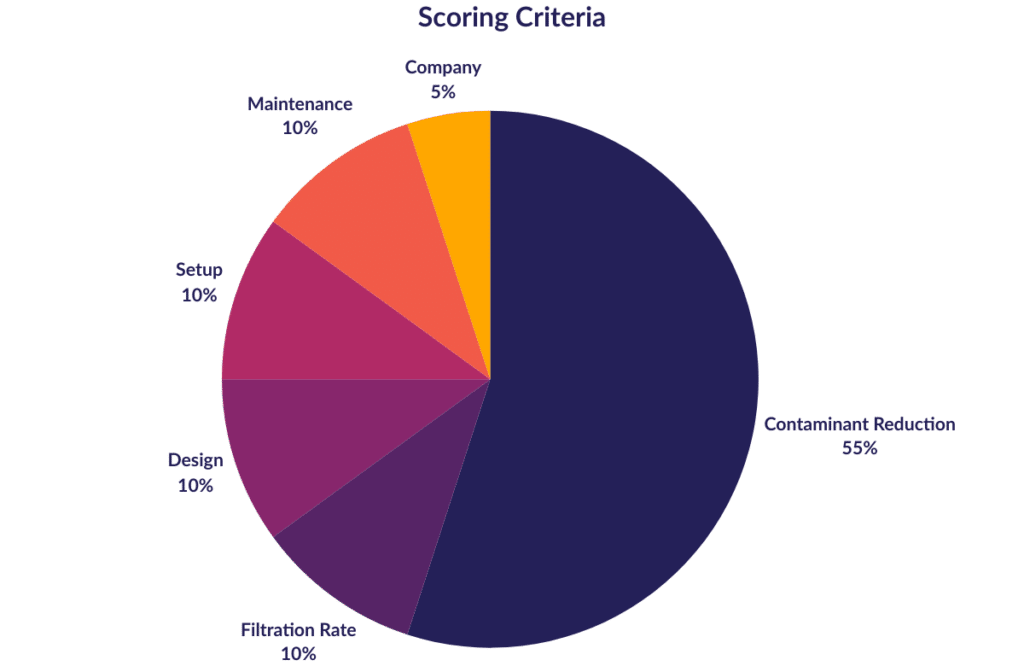The best lead water filters completely eliminated lead from our water in our testing, and/or were performance-certified to reduce 99.9% of lead. These systems also addressed many other contaminants in our water.
We use our own evidence-based testing to assess all the water filters featured in our reviews.
Brian, Water Filter Guru’s founder, personally tested all the shortlisted lead filters in this article. He leveraged his experience as an experienced WQA Certified Water Specialist (CWS) and Certified Water Treatment Representative (CWR) to fairly and comprehensively evaluate the performance of each filter.
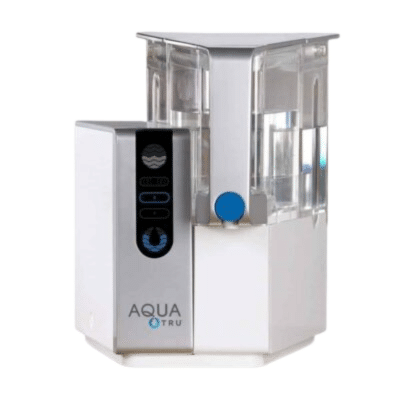
AquaTru
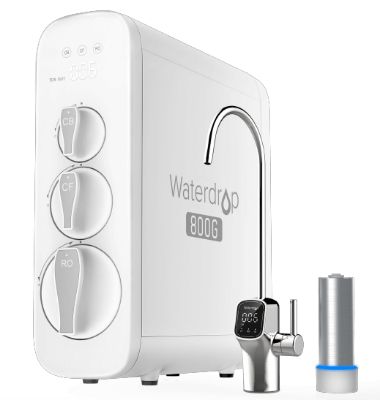
Waterdrop G3P800
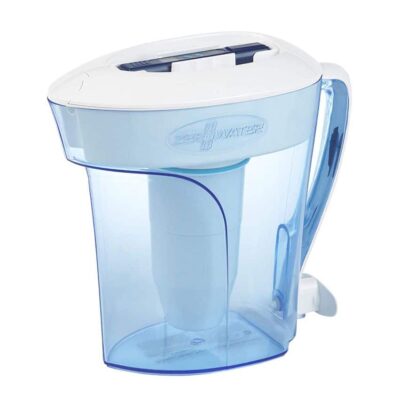
ZeroWater Pitcher
Table of Contents
Our Testing & Selection Process
The 5 Best Lead Water Filters
| Product |  AquaTru |  Waterdrop G3 P800 | 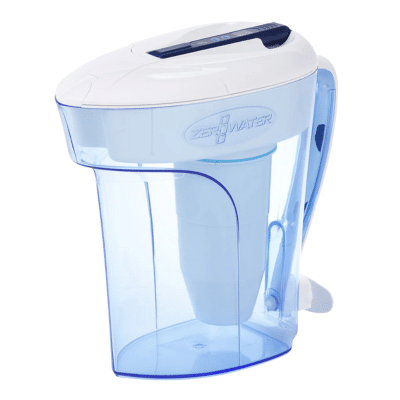 ZeroWater | 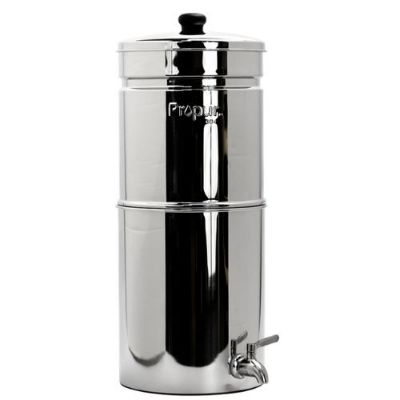 ProOne Big+ |  Kind E-3000 |
|---|---|---|---|---|---|
| Score | 9.54 | 9.21 | 8.62 | 8.56 | 8.51 |
| Price | $449.00+ | $999.00 | $39.99 | 229.95+ | $1,998.00 |
| Certifications | NSF 42, 53, 58, 401, and P473 | NSF/ANSI 58, 372 | NSF 42, 53 | NSF 42 (materials safety only) | None |
| Filter Capacity | 600 – 1,200 gallons | 550/ 1100/ 2900 gallons | 25 gallons | 1,000 – 1,200 gallons | 80,000 gallons |
| Cost per Gallon | $0.11 | $0.11-$0.13 | $0.70 | $0.41 | $0.0018 |
| Warranty | 1 year | 1 year | Vessels 90 days, filters 30 days | 5 years | Limited Lifetime |
| Read Review | Aquatru review | Waterdrop review | ZeroWater review | ProOne Big+ review |
AquaTru

The AquaTru is a reverse osmosis countertop filtration system that reduced 100% lead in our testing, and also holds an IAPMO performance certification for lead reduction. It’s one of the more expensive filters we tested, but it purified our water and provided the most reassurance with its lead reduction performance than any other shortlisted system.
Best For
Product Specs
| Price | $449.00+ |
| Contaminants Reduced | 83+ |
| Certifications | NSF 42, 53, 58, 401, and P473 |
| Process | Mechanical + RO + Carbon |
| Filter Capacity | 600 – 1,200 gallons |
| Annual Cost | ~$100 |
| Warranty | Lifetime |
Why It’s Best, Our Verdict, Etc.
The AquaTru is the best overall water filter for reducing lead because it eliminated 100% lead from our water. It also obtained the highest overall performance score, meaning that, on average, it performed better than all the other systems we tested across most categories.
Additionally, the filter is certified for reducing lead, making it unique from many of the other systems we used.
The AquaTru thoroughly purified our water using reverse osmosis. It didn’t only completely eliminate lead; it also removed 100% of all the other contaminants in our water. And its performance certifications go beyond lead reduction – it’s certified to reduce every single contaminant that it’s claimed to address.
On top of that, it wastes less water than any other countertop RO system we reviewed.
AquaTru Performance
The AquaTru obtained a 9.90 for reducing health-related contaminants in our water. In our testing, it eliminated 100% of lead, as well as every other contaminant with possible health effects present, including fluoride, barium, molybdenum, uranium, and strontium.
We also scored the system a 9.90 for its aesthetic contaminants reduction because it eliminated 100% chlorine.
A unique benefit of the AquaTru is that it has been IAPMO certified to NSF Standard 53, for reducing lead and other contaminants with health effects, so we had additional proof of its lead reduction abilities alongside our own test results. Plus, it’s also certified to NSF 42, 58, 401, and P473 for reducing all 83 contaminants that AquaTru claims it can reduce. The cherry on top is the system’s materials safety certification and NSF 372 certification for lead-free design.
We were also impressed with the AquaTru’s 4:1 recovery rate, making it more efficient than any other countertop RO system we tested. Wastewater is a side effect of reverse osmosis, but conventional RO systems are much more wasteful – in fact, many have a 1:4 pure-to-wastewater ratio; the opposite of the AquaTru.
Our experience with setup and maintenance was refreshingly easy with this unit, and we awarded scores of 10.00 and 9.75 in each category. It’s a plug-and-play machine, and most of the unit was already assembled out of the box. We were alerted by the display screen when filters needed replacing, saving us the hassle of making our own calendar reminders, and the system was surprisingly cheap to maintain at just $0.11/ gallon.
We think the AquaTru is the obvious choice for folks who want to eliminate lead and many other impurities in their water, especially if you only want to consider filters that are performance-certified.
| Criteria | Results |
|---|---|
| Overall Score | 9.54 |
| Health Related Contaminants | 9.90 |
| Aesthetic Related Contaminants | 9.90 |
| Performance Certification | Certified for 100% of reduction claims |
| Filtration Rate | 0.04 GPM |
| Component Quality | Outstanding |
| Component Certification | Certified |
| Setup | Exceptional |
| Servicing Requirements | Outstanding |
| Costs | $0.11/ gallon |
| Warranty Length | 1 year |
| Shipping | Free shipping |
| Returns | 30 days |
Waterdrop G3 P800

The Waterdrop G3 P800 is also a reverse osmosis system, but it’s designed for under-sink installation, so it doesn’t have to be filled and emptied like the AquaTru. During our at-home test, this reverse osmosis system eliminated lead and reduced or removed the other contaminants detected in our feed water. The unit has a space-saving tankless design and delivered water straight to a dedicated faucet at our kitchen sink.
Best For
Product Specs
| Price | $999.00 |
| Contaminants Reduced | 1,000+ |
| Certifications | NSF/ANSI 58, 372 |
| Process | RO |
| Filter Capacity | 550/ 1100/ 2900 gallons |
| Annual Cost | ~$145 |
| Warranty | 1 year |
Our Verdict
The Waterdrop G3 P800 is our top lead reduction system for folks who want the best POU system with a more permanent install. Its overall performance score was second-best to the AquaTru, and we had a great experience with its design, contaminant reduction, and maintenance.
Importantly, the system eliminated 100% lead in our water. It’s also performance-certified, although disappointingly not for lead reduction.
The G3 P800’s 800 gallons per day (GPD) filtration rate is one of the fastest we’ve seen for an under-sink RO system, so it’s a good choice for folks who want near-instant access to purified, lead-free water.
We were also happy with its efficient 3:1 pure-to-wastewater ratio, which wasn’t far off the AquaTru’s, and its tankless design meant we had fewer installation tasks compared to conventional tank-based RO systems.
Waterdrop G3 P800 Performance
We awarded the Waterdrop G3 P800 a 9.20 score for contaminant reduction. As well as eliminating 100% lead, it also completely removed fluoride, arsenic, chlorine, chloride, copper, manganese, selenium, and potassium from our water.
The other impurities in our water were greatly reduced: nitrate by 90%, barium by 88%, calcium, strontium, and magnesium by 87%, and sodium by 82%.
Additionally, the system is IAPMO certified to NSF 42, NSF 58, and NSF 53, for reducing cadmium, chlorine, TDS, fluoride, hexavalent chromium, and selenium. This is a good start, but we think it should be certified to remove additional contaminants, including lead.
The G3 P800 secured a 9.70 design score. We were impressed by its smart features, including the built-in filter-life tracker and the TDS meters on the faucet and unit body to monitor filter performance, as well as the UV purification feature, which prevents recontamination of the filtered water flowing to the faucet. The only thing missing is a built-in remineralization filter.
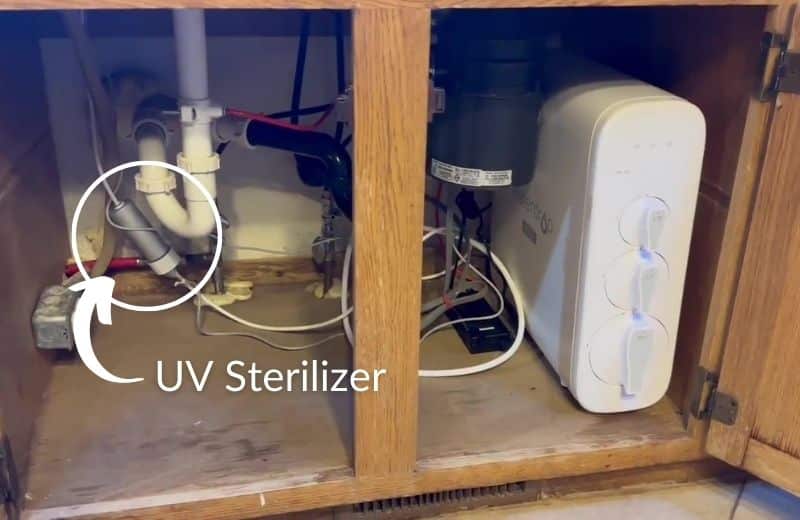
As for setup, the G3 P800 couldn’t compete with AquaTru. It obtained a 7.00 score in this category because of its more challenging, time-consuming install process. It had to be plumbed into our water line, and installation took us around 1 hour 30 minutes. This included drilling a hole for the RO wastewater line and connecting the pipes, which requires some level of handiness.
But beyond setup, maintenance was easy – filters were easy to change and cost the same as the AquaTru in the long run: $0.11/ gallon (or $0.13/ gallon including the separate remineralization filter).
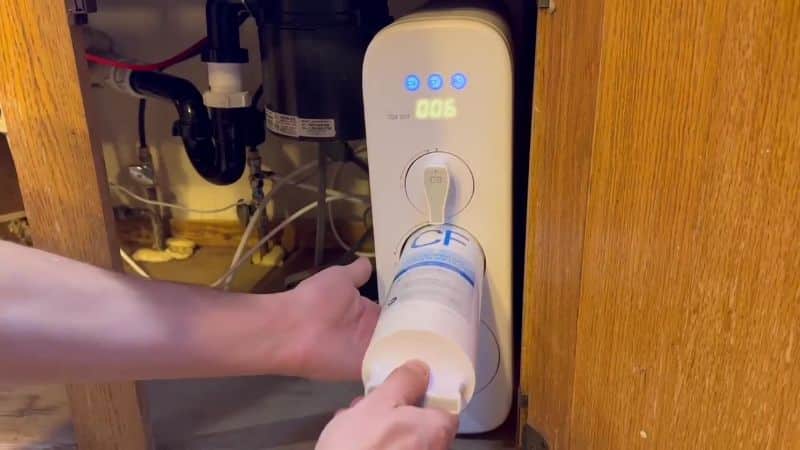
In our opinion, the Waterdrop G3 P800 is the makes-sense solution for folks who want to reduce 100% lead and many other contaminants from their tap water on demand with a certified under-sink RO purification system.
| Criteria | Results |
|---|---|
| Overall Score | 9.21 |
| Health Related Contaminants | 9.50 |
| Aesthetic Related Contaminants | 3.50 |
| Performance Certification | Certified for 100% of reduction claims |
| Filtration Rate | 800 GPD |
| Component Quality | Outstanding |
| Component Certification | Certified |
| Setup | Weak |
| Servicing Requirements | Exceptional |
| Costs | $0.11/ gallon (w/o remineralization), $0.13/ gallon (w/ remineralization) |
| Warranty Length | 1 year |
| Shipping | Free shipping to lower 48 |
| Returns | Good |
ZeroWater Ready-Pour Pitcher

The ZeroWater Ready-Pour Pitcher is a gravity-fed water filter pitcher, so it’s more affordable and portable than the larger lead water filters we reviewed. It uses just a single filter, so its design is simpler, but don’t discount it for that reason – it combines 6 stages of filtration and is NSF certified to NSF/ANSI 53 for lead reduction. Plus, it reduced the highest concentrations of many contaminants in our water compared to other water filter pitchers.
Best For
Product Specs
| Price | $39.99 |
| Contaminants Reduced | 24 |
| Certifications | NSF 42, 53 |
| Process | Mechanical + Ion Exchange + Activated Carbon |
| Filter Capacity | 25 gallons |
| Annual Cost | ~$110 |
| Warranty | Vessels 90 days, filters 30 days |
Why We Like It
The ZeroWater Pitcher is the first non-RO system to make this list. That means it’s significantly cheaper upfront than AquaTru’s and Waterdrop’s offerings, but it still did a great job of reducing the majority of the contaminants in our water.
We shortlisted the pitcher because it impressed us with its ease of setup, filtration rate, and performance on the whole (with some exceptions – discussed later). Plus, it checked one of our “must-have” requirements: it’s performance-certified for lead reduction.
ZeroWater Performance
The ZeroWater pitcher’s 8.34 score for contaminant reduction was one of the best awarded to a non-RO filter. It did an exceptional job of eliminating 100% fluoride, chlorine, uranium, barium, strontium, molybdenum, nitrate, and sulfate in our water, as well as reducing 97% copper.
Our test water didn’t contain lead, so unfortunately, we couldn’t use our firsthand data to comment on its lead reduction abilities. However, the pitcher does have NSF Standard 42 and Standard 53 certifications for the reduction of 6 contaminants, including lead. This propelled it ahead of many other water filter pitchers, which weren’t certified for lead reduction.
But its contaminant reduction performance wasn’t perfect – 3.4 PPB of chloroform (a disinfection byproduct) was detected in our filtered water, affecting the quality of our filtered water. Our test data also showed that the pitcher has greatly reduced beneficial minerals in our water, and we’d prefer to retain these for their taste and health benefits.
The ZeroWater pitcher might not have a digital display screen with filter change reminders, but we were able to track filter life with a unique and more precise method: by using the included TDS meter. When the filter is performing at its best, the TDS reading should be 0. Advice in the user manual says we should replace the filter once the meter reading increased to 006.
Setup was quicker and easier than for any other filter on this list. The pitcher has just three main components, and the filter didn’t need priming, soaking, or flushing, so we awarded it a high score of 9.50 in this category. The big letdown was maintenance – the filter has a poor capacity of just 40 gallons, and the ongoing cost of $0.70/ gallon was around three times the cost per gallon of similar pitchers.
The pitcher secured a 10.00 for filtration rate. It was one of the faster-filtering water filter pitchers we tested, so we had access to filtered water pretty quickly.
We think the ZeroWater filter pitcher is a great performance-certified lead-reducing alternative to expensive, complex RO systems, which reduced or removed many of the same contaminants in our testing.
| Criteria | Results |
|---|---|
| Overall Score | 8.62 |
| Health Related Contaminants | 8.30 |
| Aesthetic Related Contaminants | 9.90 |
| Performance Certification | Certified for 25% of reduction claims |
| Filtration Rate | 2.62 GPH |
| Component Quality | Fair |
| Component Certification | Certified |
| Setup | Outstanding |
| Servicing Requirements | Outstanding |
| Costs | $0.70/ gallon |
| Warranty Length | Vessels 90 days, filters 30 days |
| Shipping | Free shipping on orders above $60 to continental US |
| Returns | No returns |
ProOne Big+

The ProOne Big+ is another gravity-fed water filter, but it has a few advantages over the ZeroWater pitcher: it has a minimal-plastic design, and its 3-gallon water-holding capacity means it can store more filtered water and requires fewer refills. This stainless steel system isn’t performance certified, but it did reduce 100% lead in our testing.
Best For
Product Specs
| Price | 229.95+ |
| Contaminants Reduced | 200+ |
| Certifications | NSF 42 (materials safety only) |
| Process | Ceramic + Carbon |
| Filter Capacity | 1,000 – 1,200 gallons |
| Annual Cost | ~$100 |
| Warranty | 1 year |
What We Thought
The ProOne Big Plus did a good job of eliminating 100% lead, and unlike the majority of other systems, it can also be used for emergency preparedness. We noted that it was easy to set up and maintain, and had one of the highest company scores of all the stainless steel filter manufacturers we tested.
We also preferred the design quality of this unit compared to similar systems – it felt sturdy and durable, and the included stand and stainless steel spigot were a nice touch (these are often sold at an extra cost by similar brands).
ProOne Big+ Performance
The Big+ got a slightly higher contaminant reduction score than ZeroWater: 8.44. As we mentioned, it eliminated lead in our testing, but, disappointingly, it isn’t certified to reduce lead or any other contaminants.
Fluoride, copper, aluminum, and manganese were also completely removed from our water. But there was one factor that prevented the Big+ from securing a higher score: it only reduced 47% of total THMs and 56% chloroform.
Since it also offers microbiological contaminant reduction, we tested the ProOne Big+ with untreated river water, too. It did a stellar job of eliminating all three bacteria types in the test water, so we awarded it a 10.00 score here.
Design is an area where this ProOne unit excelled, and it received another 10.00 score from us. The filter elements have an NSF 42 materials safety certification, and the unit used fewer plastic components than many similar systems (only the filter elements contained plastic).
Additionally, the Big+ was easier to set up than many of its competitors. The game-changer here was the lack of filter priming (which is a common requirement for stainless steel filter systems). We just had to scrub the filters under running water. We had the unit assembled and ready to go within 20 minutes.
Maintenance was similarly easy, but we were less impressed with the filter’s $0.41/ gallon servicing cost – that’s around three-to-four times the cost of most other systems on this list. The system also secured a lower score of 7.00 for its 0.77 GPH filtration rate, which was slower than many similar filters.
The ProOne Big+ is best suited to folks who want an easy-assemble gravity-fed lead filtration solution with a large water-holding capacity and a minimal-plastic design.
| Criteria | Results |
|---|---|
| Overall Score | 8.56 |
| Health Related Contaminants | 8.65 |
| Aesthetic Related Contaminants | 9.90 |
| Performance Certification | Not certified for any reduction claims |
| Filtration Rate | 0.77 GPH |
| Component Quality | Exceptional |
| Component Certification | Certified |
| Setup | Good |
| Servicing Requirements | Good |
| Costs | $0.41/ gallon |
| Warranty Length | 5 years |
| Shipping | Free shipping on orders over $69.95 to the lower 48 states |
| Returns | 30 days |
Kind E-3000

The Kind E-3000 is our top pick for the best whole home lead removal system. It completely eliminated lead in our second test (more on that later), and it’s the only system on this list that removes lead from the water supplied around an entire home, including all faucets, fixtures, and appliances.
Best For
Product Specs
| Price | $1,998.00 |
| Contaminants Reduced | 160+ |
| Certifications | None |
| Process | Mechanical Filtration + Catalytic Carbon |
| Filter Capacity | 80,000 gallons |
| Annual Cost | ~$120 – $300 |
| Warranty | Limited Lifetime |
Our Thoughts
The Kind E-3000 was one of the few whole-house water filtration systems we tested that reduced 100% lead in our testing.
It’s a cartridge-based system, so it costs around $500 less than comparative tank-based systems, and it was much easier to DIY install.
In our testing, the unit reduced up to 100% of many contaminants in our feed water, and it offered a unique benefit that we didn’t get from any other system: hard mineral scale reduction thanks to its included eSoft Salt-Free Softening Cartridge.
Kind E-3000 Performance
The Kind E-3000 received a contaminant reduction score of 8.23 overall. In our first test, the filter only reduced lead by 58%, which surprised us given that lead is one of the contaminants that’s usually addressed by catalytic carbon (the system’s primary filter media).
As we went to replace the filters, we found that we’d installed them back-to-front, with the sediment filter (which is intended to trap large particles first) as the final stage in the sequence.
We can’t imagine that the incorrect configuration would have impacted the lead reduction performance, as the catalytic carbon filter was still in the middle. But we decided to test our water again after buying a new set of filters and installing the right way around.
This time, our test data showed that 100% of lead was reduced. Our theory is that the better performance in our second test was due to the initial filters being faulty, or perhaps as a result of differences in our feed water quality between test 1 and test 2.
Aside from lead, the E-3000 reduced varying concentrations of chloroform, fluoride, nickel, zinc, barium, manganese, and copper, across both tests. It eliminated 100% chlorine in test 1 and 2. We were generally pleased with the system’s performance, but it’s at the bottom of this list because of the discrepancies with our results. It also isn’t performance-certified.
We awarded the E-3000 a 10.00 for filtration rate because its 15 GPM flow rate exceeded our expectations and had no negative effect on our water pressure whatsoever.
The system also received a 10.00 score for design quality. We noted that it has a sturdy, durable feel – the filter housings are made from a heavy-duty polymer composite, and the mounting bracket is stainless steel. However, we gave it a lower 7.50 score for setup because it required the most difficult install of all the systems on this list.
We found the E-3000 easy and affordable to maintain, and it secured a 9.50 overall maintenance score. The carbon and sediment filters only needed a once-yearly replacement, and the eSoft cartridge never needs to be changed. Plus, we calculated its maintenance cost as just $0.0018 per gallon. We think it’s ideal for folks who can afford to invest more money upfront on a POE lead removal solution that’s super affordable to maintain in the long run.
*If you don’t want or need to reduce hardness scale in your plumbing, consider the E-1000, a more affordable configuration that features the same carbon and sediment filters as the E-3000 but doesn’t use the eSoft cartridge.
| Criteria | Results |
|---|---|
| Overall Score | 8.51 |
| Health Related Contaminants | 8.40 |
| Aesthetic Related Contaminants | 9.90 |
| Performance Certification | Not certified for any reduction claims |
| Filtration Rate | 15 GPM |
| Component Quality | Exceptional |
| Component Certification | Not certified |
| Setup | Below Average |
| Servicing Requirements | Excellent |
| Costs | $0.0018/ gallon |
| Warranty Length | Limited Lifetime |
| Shipping | Free on orders over $99 within the Continental US |
| Returns | 120 days |

